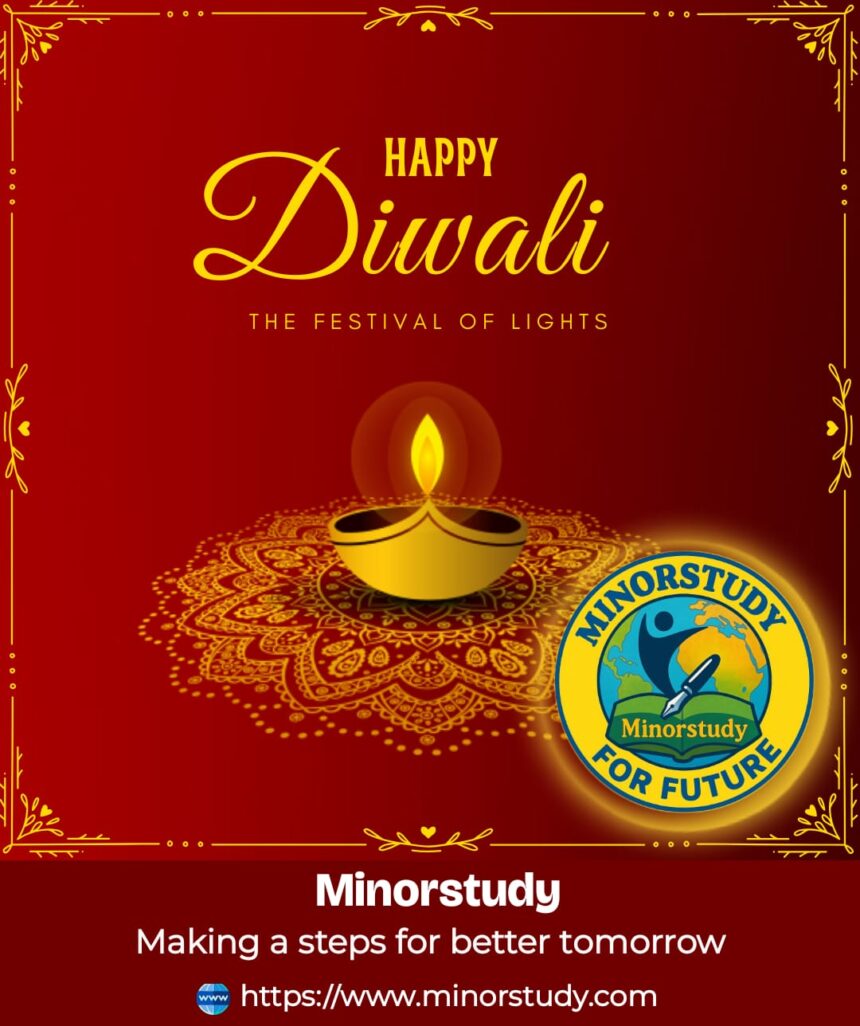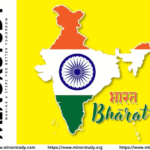Happy Diwali: The Festival of Lights That Spreads Joy and Positivity
Happy Diwali: Diwali, or Deepawali, is not just a festival — it’s an emotion, a celebration of light conquering darkness, and good triumphing over evil. Celebrated by millions of people across India and the world, Diwali is one of the most awaited and cherished festivals of the year. Streets shimmer with diyas (oil lamps), homes are decorated with rangolis, families exchange sweets, and fireworks light up the sky.
- 🕉️ History of Diwali
- 1. The Return of Lord Rama to Ayodhya
- 2. The Incarnation of Goddess Lakshmi
- 3. Lord Krishna and Narakasura
- 4. Lord Mahavira’s Nirvana
- 5. Guru Hargobind Ji’s Release
- 🌼 Timeline of Diwali
- 🎇 Fascinating Facts About Diwali
- 🪔 The Five Days of Diwali: Observance and Rituals
- Day 1: Dhanteras
- Day 2: Naraka Chaturdashi (Choti Diwali)
- Day 3: Lakshmi Puja (Main Diwali Day)
- Day 4: Govardhan Puja (Padwa)
- Day 5: Bhai Dooj
- 🌠 Significance of Diwali
- 🎁 Wishing on Diwali – Heartfelt Greetings
- 💫 Importance of Diwali in Our Life
- 📖 FAQs About Diwali
- 1. Why is Diwali called the Festival of Lights?
- 2. How long does Diwali last?
- 3. Which deities are worshipped during Diwali?
- 4. What foods are commonly eaten during Diwali?
- 5. How is Diwali celebrated globally?
- 6. What is eco-friendly Diwali?
- 7. What are the other names of Diwali?
- 🧭 Conclusion – The Daily Life Impact of Diwali
- 🌟 Final Thought
But beyond the celebrations lies a deeper meaning — a story of faith, gratitude, and renewal. In this detailed guide, let’s explore everything about Diwali: its history, facts, timeline, significance, observance, importance, and how it impacts our daily lives.
🕉️ History of Diwali
The origin of Diwali dates back thousands of years and holds significance in different parts of India for different reasons. However, the central theme remains universal — the victory of light over darkness, knowledge over ignorance, and good over evil.
1. The Return of Lord Rama to Ayodhya
According to the Ramayana, Diwali marks the return of Lord Rama, his wife Sita, and his brother Lakshmana to Ayodhya after a 14-year exile and after defeating the demon king Ravana. The people of Ayodhya welcomed them by lighting rows of diyas, symbolizing the victory of light and righteousness.
2. The Incarnation of Goddess Lakshmi
In some traditions, Diwali also marks the birth of Goddess Lakshmi, who emerged from the cosmic ocean during the Samudra Manthan (churning of the ocean). Hence, on Diwali night, devotees worship Lakshmi for wealth, prosperity, and well-being.
3. Lord Krishna and Narakasura
In southern India, Diwali celebrates Lord Krishna’s victory over Narakasura, a demon who terrorized the world. His defeat symbolized the triumph of virtue over sin.
4. Lord Mahavira’s Nirvana
For Jains, Diwali commemorates the day when Lord Mahavira, the last Tirthankara, attained nirvana (liberation).
5. Guru Hargobind Ji’s Release
For Sikhs, Diwali is significant because it marks the day Guru Hargobind Ji, the sixth Sikh Guru, was released from imprisonment along with 52 kings. Hence, it’s known as the Bandi Chhor Divas.
In every version, Diwali stands for the universal value of righteousness, unity, and hope.
🌼 Timeline of Diwali
Treta Yuga (Ancient Era): Lord Rama’s return to Ayodhya.
Dvapara Yuga: Lord Krishna defeats Narakasura.
527 BCE: Lord Mahavira attains Nirvana (Jain tradition).
1619 CE: Guru Hargobind Ji’s release from Gwalior Fort (Sikh tradition).
Modern Era: Diwali becomes a national holiday in India and is celebrated worldwide by Hindus, Sikhs, Jains, and even non-Hindus for its message of light and joy.
🎇 Fascinating Facts About Diwali
Here are 10 bright facts about the Festival of Lights that make it truly special:
Diwali is celebrated in over 100 countries across the world.
The word Diwali comes from the Sanskrit word Deepavali, meaning “a row of lamps.”
It’s celebrated over five days, each having a distinct significance.
Millions of diyas are lit during Diwali, symbolizing enlightenment.
The festival also marks the Hindu New Year in some regions of India.
Fireworks are a relatively modern addition — traditional Diwali focused on diyas and rituals.
Exchanging sweets symbolizes spreading happiness and goodwill.
Cleaning homes before Diwali is a symbol of removing negativity and welcoming prosperity.
The largest Diwali celebrations outside India happen in Leicester (UK) and Singapore.
Diwali is recognized by the United Nations and celebrated globally as a festival of positivity and inclusion.
🪔 The Five Days of Diwali: Observance and Rituals
Diwali isn’t just a one-day festival. It is celebrated over five auspicious days, each with its own religious and social significance.
Day 1: Dhanteras
Marks the beginning of Diwali.
People buy gold, silver, or new utensils.
It’s believed that purchasing something new brings wealth and good fortune.
Worship of Lord Dhanvantari (the god of health) and Goddess Lakshmi.
Day 2: Naraka Chaturdashi (Choti Diwali)
Commemorates Lord Krishna’s victory over the demon Narakasura.
People clean their homes and light the first diyas.
Some regions perform early morning oil baths symbolizing purification.
Day 3: Lakshmi Puja (Main Diwali Day)
The most important day.
Families worship Goddess Lakshmi, Lord Ganesha, and Lord Kubera.
Diyas, rangolis, sweets, and lights fill homes.
Fireworks illuminate the sky to celebrate the festival of joy.
Day 4: Govardhan Puja (Padwa)
Celebrates Lord Krishna lifting the Govardhan Mountain to protect villagers from heavy rain.
In Gujarat and North India, it’s also observed as Annakut — where devotees offer food to deities.
Day 5: Bhai Dooj
Celebrates the bond between brothers and sisters.
Sisters pray for their brothers’ long life and well-being, while brothers offer gifts in return.
🌠 Significance of Diwali
1. Spiritual Significance
Diwali reminds us that light always triumphs over darkness — symbolizing the victory of the soul’s inner light over ignorance and illusion. Lighting a diya signifies awakening the divine within.
2. Cultural Significance
It unites people of all religions and backgrounds. Despite varied legends, the festival’s essence — goodness, forgiveness, and new beginnings — remains the same.
3. Social Significance
Families come together, relationships are renewed, and communities celebrate harmony. It’s a time for reconciliation, charity, and gratitude.
4. Economic Significance
Diwali boosts local and national economies. From small artisans selling diyas to large-scale businesses launching festive sales, it’s a period of economic revival and prosperity.
🎁 Wishing on Diwali – Heartfelt Greetings
Here are some warm ways to wish “Happy Diwali”:
“May this Diwali bring endless light, happiness, and success to your life!”
“Wishing you a prosperous and safe Diwali filled with love and laughter.”
“Let’s celebrate the victory of light over darkness together — Happy Diwali!”
“May Goddess Lakshmi bless your home with health, wealth, and peace.”
“Shine bright like a diya and spread positivity everywhere — Happy Deepawali!”
💫 Importance of Diwali in Our Life
Reinforces Positivity:
The lighting of diyas reminds us to stay hopeful and spread joy even during dark times.Encourages Gratitude:
Diwali teaches us to thank the divine and the people around us for the blessings in life.Promotes Cleanliness and Renewal:
Cleaning and decorating our surroundings before Diwali represent inner purification and readiness for a new phase.Strengthens Relationships:
Family gatherings and gift exchanges strengthen emotional bonds and friendships.Boosts National Unity:
Regardless of religion or region, people celebrate Diwali together, symbolizing unity in diversity.Symbolizes Hope:
The festival gives people courage to overcome personal struggles and to move toward a brighter future.
📖 FAQs About Diwali
1. Why is Diwali called the Festival of Lights?
Because lighting diyas and lamps signifies removing darkness and ignorance while bringing in knowledge and positivity.
2. How long does Diwali last?
Diwali celebrations last for five days, each day having its own spiritual meaning.
3. Which deities are worshipped during Diwali?
Primarily Goddess Lakshmi (wealth), Lord Ganesha (wisdom), and Lord Kubera (prosperity).
4. What foods are commonly eaten during Diwali?
Traditional sweets like laddoos, barfis, and jalebis, along with snacks like chakli, namakpare, and samosas.
5. How is Diwali celebrated globally?
Countries like Nepal, Sri Lanka, Malaysia, Fiji, Mauritius, and the UK hold large-scale Diwali parades and cultural events.
6. What is eco-friendly Diwali?
It encourages using natural diyas, paper lanterns, and avoiding loud fireworks to protect the environment.
7. What are the other names of Diwali?
Deepawali, Dipavali, Tihar (in Nepal), and Bandi Chhor Divas (in Sikhism).
🧭 Conclusion – The Daily Life Impact of Diwali
Diwali is more than just a festive event — it’s a way of life. It reminds us that no matter how dark the world seems, even a single spark of light can make a difference. The diyas we light represent hope, resilience, and humanity’s eternal pursuit of goodness.
In today’s fast-paced world, Diwali inspires us to:
Reconnect with family,
Reignite our dreams, and
Reflect on gratitude and compassion.
When you light a diya this Diwali, remember — it’s not just a lamp, but a symbol of enlightenment within your heart.
Let this festival remind us that light doesn’t fight darkness — it simply shines and darkness disappears.
🌟 Final Thought
“Let your inner light shine brighter than the fireworks. May your life be filled with the glow of happiness and the warmth of love. Happy Diwali!”







**breathe**
breathe is a plant-powered tincture crafted to promote lung performance and enhance your breathing quality.
Spot on.
Hello my loved one! I wish to say that this article is awesome, nice written and include almost all significant infos. I¦d like to peer extra posts like this .
I really like your writing style, superb info , appreciate it for putting up : D.